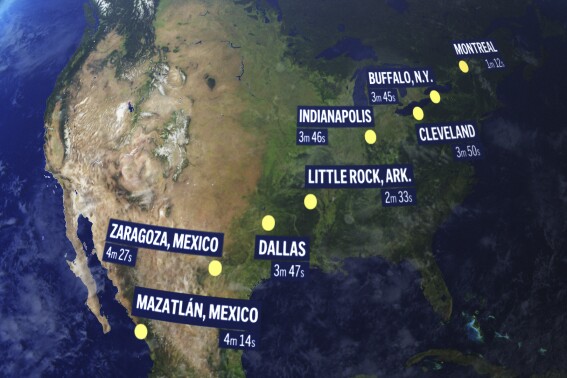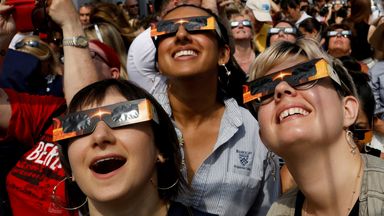Millions of people across the country are due to gather to watch the total solar eclipse coming up on April 8, but millions more will be situated outside of the path of totality.
The eclipse will start over the skies of Texas, moving northeast across the U.S. through the Midwest and New England, exiting over Maine. About 32 million people live within the path of the eclipse—which will pass over 13 U.S. states—and a further 1 million to 5 million are expected to travel to watch it.
Those wishing to catch a glimpse of the cosmological phenomenon but live too far away can still get involved.
Starting from 1 p.m. ET on April 8, NASA will be hosting live coverage of the event, including views of the eclipse from across the country, such as Illinois, Maine, Indiana, New York, Arkansas, and multiple locations in Texas. The coverage will also be hosted from NASA's Glenn Research Center in Ohio, the only NASA center in the path of the eclipse's totality.
The three-hour coverage will also include discussions by NASA experts, a show-and-tell of NASA's eclipse science experiments, chats with astronauts aboard the space station, and a look into watch parties across the country. The broadcast will be streamed on NASA+ and online on the NASA website, as well as airing on NASA TV.
For those wishing to skip all the extras and only watch the eclipse itself, a no-commentary feed of the eclipse will also be streamed on NASA's YouTube channel, also lasting around three hours. This stream will show views from locations across the South and Midwest, switching between them with the eclipse's movement, and weather conditions.
For the lucky people living within the eclipse's path of totality, NASA urges taking eye safety precautions. The space agency has encouraged people to only use certified eclipse glasses and viewers to watch the event as the moon slowly moves to obstruct the view of the sun.
"Without proper eye protection, looking directly at the Sun at any time (not just during an eclipse) can cause Solar Retinopathy. This can cause irreversible damage to your eyesight by 'imprinting' a kind of ghost image of the Sun on your retina that will impair your central vision," Ryan Milligan, a lecturer in astrophysics at Queen's University Belfast, U.K., told Newsweek.
NASA's interactive Eclipse Explorer Map will let people track the eclipse as it moves across the country in real-time, searching by zip code to check the time that the totality will pass by a given location. It will also provide weather updates. For locations outside of the path, it will show the percentage of the sun that will be covered by the moon.
The next total solar eclipse to pass across the contiguous United States won't occur for another 20 years, until August 2044.
Do you have a tip on a science story that Newsweek should be covering? Do you have a question about solar eclipses? Let us know via science@newsweek.com.
Disclaimer: The copyright of this article belongs to the original author. Reposting this article is solely for the purpose of information dissemination and does not constitute any investment advice. If there is any infringement, please contact us immediately. We will make corrections or deletions as necessary. Thank you.



